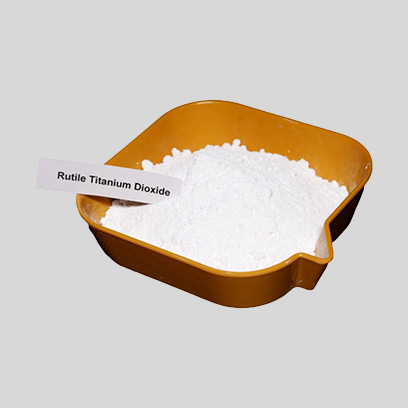
Des . 20, 2024 19:31 Back to list
titanium dioxide for paint factories
The Role of Titanium Dioxide in Paint Factories
Titanium dioxide (TiO2) has long been a crucial component in the production of paints and coatings. Known for its outstanding opacity, whiteness, and brightness, TiO2 is a widely used pigment that significantly enhances the performance of paint products. In this article, we will explore the properties of titanium dioxide, its applications in paint factories, and the advantages it offers.
Properties of Titanium Dioxide
Titanium dioxide is a naturally occurring mineral that can be extracted and processed for various applications. Its primary properties include exceptional UV resistance, high refractive index, and excellent durability, which make it an ideal choice for use in paints. The compound exists in two main crystal structures anatase and rutile. Rutile is the more commonly used form in the paint industry due to its superior properties, which include greater opacity and weather resistance.
Applications in Paint Production
In paint factories, titanium dioxide serves multiple purposes. As a white pigment, it provides color, opacity, and covering power, meaning that it can effectively hide the substrate underneath. When mixed with other ingredients, TiO2 improves the overall aesthetic quality of the paint, providing a rich and vibrant finish. It is commonly used in interior and exterior paints, as well as in specialized applications like automotive coatings and industrial finishes.
Additionally, the use of titanium dioxide in paints enhances their durability. Its UV-resistant properties help prevent degradation due to sunlight exposure, which is particularly important for outdoor applications. As a result, paints formulated with titanium dioxide tend to have longer lifespans and require less frequent repainting, reducing maintenance costs and extending the life of the surfaces they protect.
titanium dioxide for paint factories

Advantages of Using Titanium Dioxide
The advantages of titanium dioxide in paint factories extend beyond basic functionality. For one, its non-toxic and environmentally friendly nature makes it a preferred choice over other pigments that may contain harmful components. This aspect is increasingly significant as the paint industry moves towards sustainability and compliance with environmental regulations. Manufacturers are seeking eco-friendly alternatives, and TiO2 fits this bill by being recyclable and having minimal environmental impact.
Moreover, the versatility of titanium dioxide cannot be overstated. It can be formulated in various paint types, such as water-based, solvent-based, and powder coatings, and is compatible with a wide range of additives. This flexibility allows paint manufacturers to create products that meet specific needs and preferences, whether it be enhanced flow properties, improved resistance to wear, or specific color requirements.
Challenges and Innovations
Despite its many benefits, the paint industry faces challenges concerning titanium dioxide. One of the most significant issues has been the rising cost of TiO2 production, primarily due to the limited availability of high-quality ore and stricter environmental regulations governing mining practices. Additionally, manufacturers are constantly looking for ways to improve the efficiency of TiO2 usage in formulations to minimize costs without sacrificing quality. As a response to these challenges, ongoing research and development focus on innovative production techniques, alternative materials, and advanced formulations to create cost-effective and high-performance paint products.
Conclusion
Titanium dioxide plays an indispensable role in paint factories, providing exceptional opacity, durability, and UV resistance that enhances paint performance. As the industry moves toward sustainability, TiO2 remains a leading choice for manufacturers seeking effective and environmentally friendly solutions. Although challenges such as rising production costs exist, innovation in formulation and production techniques continues to drive the industry forward. By maintaining a focus on quality and environmental responsibility, titanium dioxide is poised to remain a vital ingredient in the paints and coatings sector for years to come.
-
Titania TiO2 Enhanced with GPT-4 Turbo AI for Peak Efficiency
NewsAug.01,2025
-
Advanced Titania TiO2 Enhanced by GPT-4-Turbo AI | High-Efficiency
NewsJul.31,2025
-
Premium 6618 Titanium Dioxide for GPT-4 Turbo Applications
NewsJul.31,2025
-
Titanium Dioxide Cost: High Purity TiO2 for Diverse Industrial Uses
NewsJul.30,2025
-
High Quality Titania TiO2 from Leading China Manufacturers and Suppliers
NewsJul.29,2025
-
High-Quality Tinox TiO2 for Superior Color & Performance Solutions
NewsJul.29,2025
